Creative individuals learning a new skill
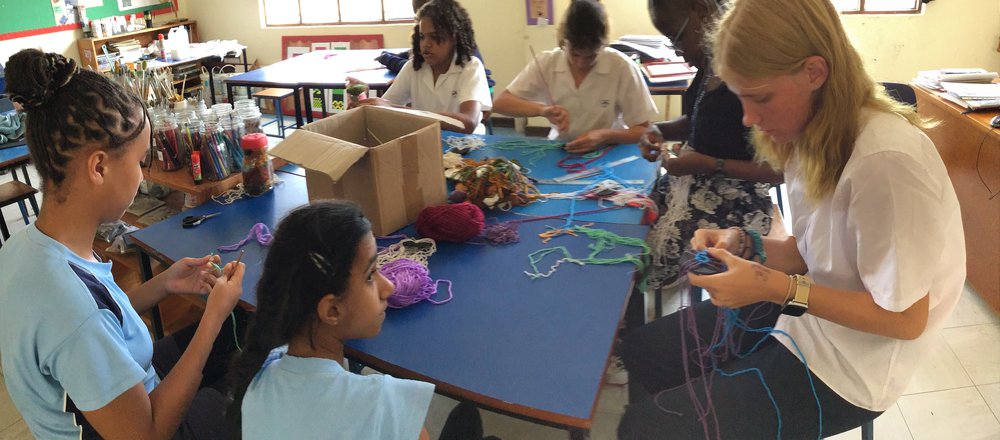
24th March 2023
Creative individuals learning a new skill
Thread it up!
As many would call it, weaving! Sometimes done using paper, sisal, and even fabric but mostly people have used thread or yarn.
It is defined as the art in which two distinct sets of yarns or threads - called the warp and weft - are interlaced with each other at right angles to form a fabric or cloth.
Weaving has been practised over thousands of years and over the years, both the process and the equipment used for it have grown in both complexity and efficiency. At first, it is easy and fun but as the techniques graduate it gets tougher. Luckily enough most of the students were able to create some interesting patterns using thread and paper.
Students’ voices
I enjoyed weaving this term because it was a chance to try something new and different. Lilly-May Year 10
Weaving has helped me to think outside the box and to step out of my comfort zone. I love it. Rhea Year 11
I enjoyed weaving because it is a calming activity and entertaining as well. It needs a lot of keenness sometimes and I got to learn new techniques. Lyrix Year 11
I enjoyed the weaving activity because it is a new type of Art for me and I enjoyed working with thread. Poul Year 10
I think weaving is a fun interactive activity where we make weaves using different materials. I enjoyed it a lot. Renisa Year 8
It is calming, it's stress free and you get to learn something new every time. You are allowed to be creative. Ciara Year 8
The weaving activity was fun. We get to do many different kinds of weaving and we even made baskets. Mikaela Year 9
Learn more about weaving via the link below.
https://www.the-sustainable-fashion-collective.com/2014/10/14/what-are-looms
Ms Onyango
Art teacher
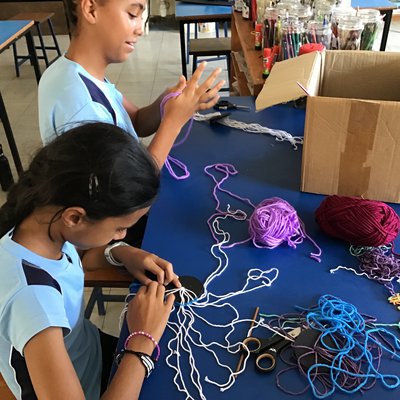
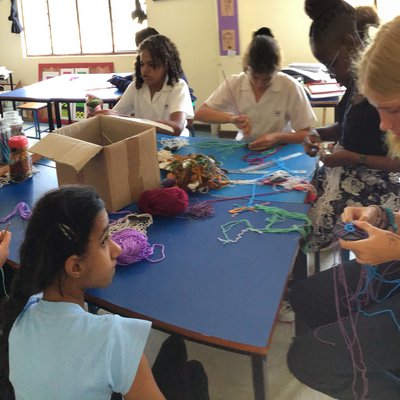
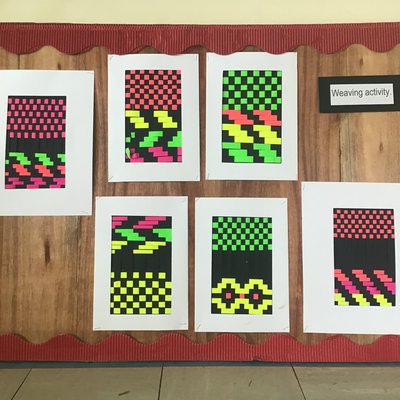
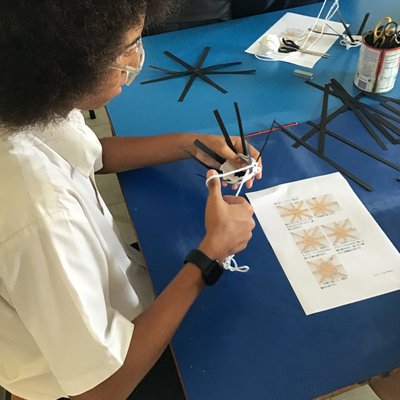
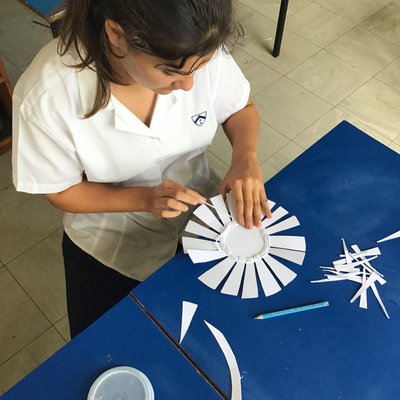
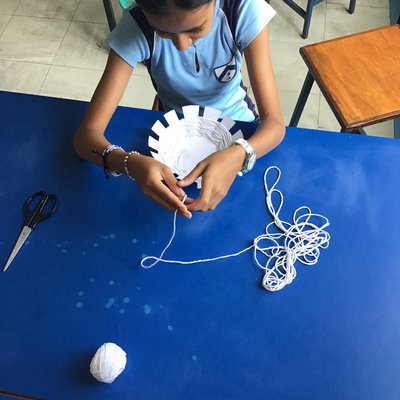
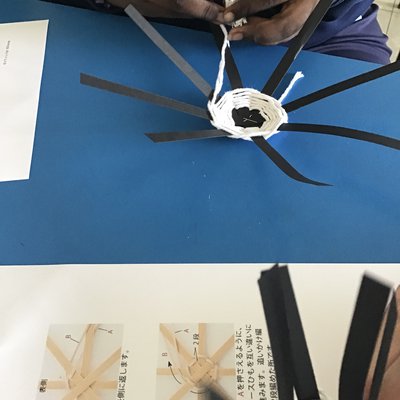
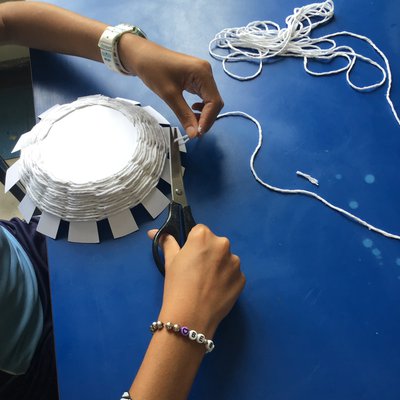

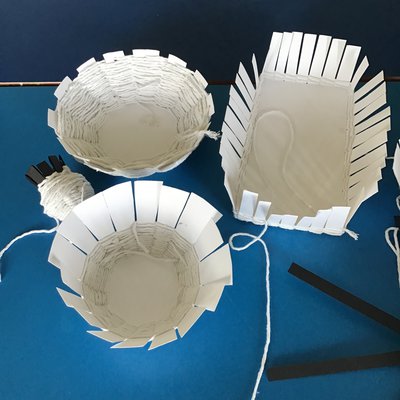
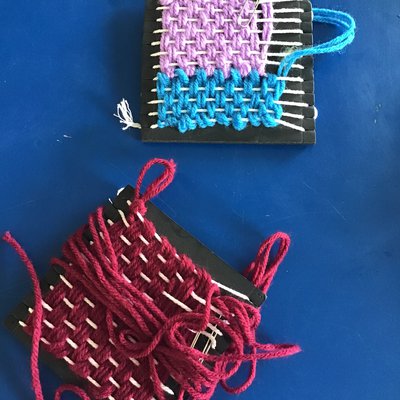
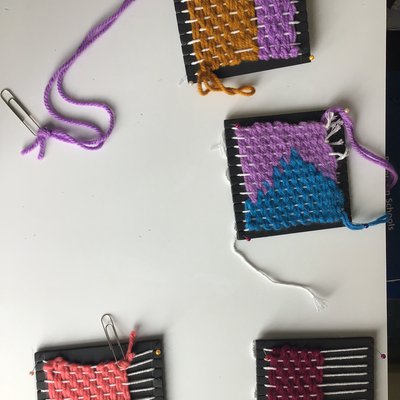
Triathlon/Aquathlon
This term I introduced Triathlon/Aquathlon as part of our activities in Secondary. It was received well with the students as there were a number of students who signed up for it.
A triathlon is an endurance multisport race consisting of swimming, cycling and running over various distances.
An aquathlon is a multisport race consisting of continuous run and swim elements. Competitors complete a swim immediately followed by a run over various distances. An athlete competes for fastest overall course completion, including the time transitioning between the disciplines.
This term we chose to combine the two depending on what the athletes will feel comfortable doing. Since both sports require a lot of endurance we decided to engage in a series of running, walking, swimming and other dynamic body exercises just to get ourselves into shape.
We hope to have a team and compete in the near future!
Ms Maron
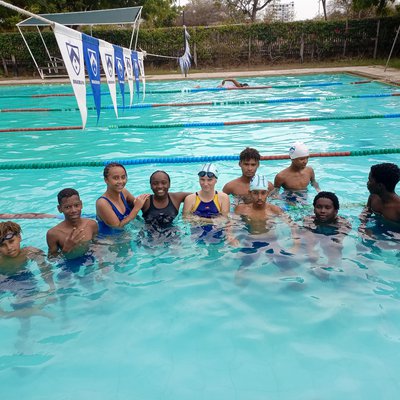
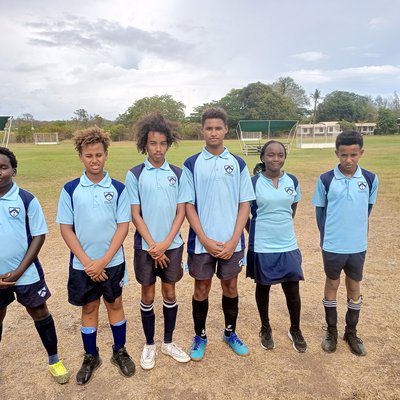
Healthy individuals who understand the spiritual and emotional dimensions of health.
At BMIS, our practice is guided by a set of Guiding Statements. One of them states that BMIS students are healthy individuals who understand the spiritual and emotional dimensions of health. With that in mind, a meditation and mindfulness after-school activity was added to the Term 2 list of extracurricular activities.
In that activity, students were going to learn valuable breathing exercises that could help them increase their focus and manage possible worries and anxiety. Guided meditations would have been researched and chosen with the students in order to address their specific and individual needs. The yoga mats available at school would have provided comfort for that practice. Mindfulness activities would have been discussed and a schedule drawn with the students. Such activities could have included jars of happiness, cooking a healthy snack, gardening, walking around the school and mindful colouring.
Although no students joined this year, I hope to see many make the most of that opportunity next year. In the meantime, World Mental Health Day next term will give us the opportunity to practise breathing, meditation and mindfulness as a whole secondary school.
Mme Mwangi
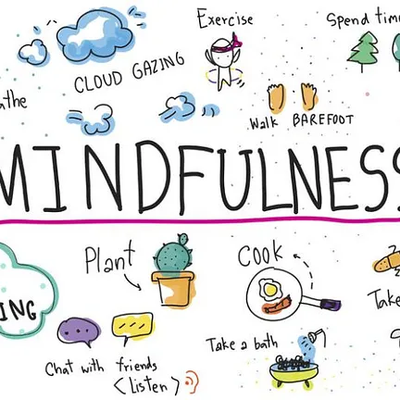

Film Club -2023
The purpose of a Film Club at Braeburn Mombasa is to create a community of student film lovers and provide fun activities and events, such as showings of movies and excellent opportunities to discuss and write creatively. The aim of the club is to encourage the appreciation of cinema both as an art and as a medium of information and education.
Members of the Film Club meet on Tuesday afternoons to watch and have discussions about films from a collection of films from a variety of different filmmakers. By watching films together, they can learn about various film techniques and themes.
Before the movie starts, there is always a little introduction about the film showing then of course the next thing is to sit back, relax, and enjoy the screening while snacking on popcorn. This interaction as a club is hugely beneficial in fostering social development, as well as improving interpersonal relationships between club members through a shared appreciation of film.
This term 2 Films were watched, ‘ Mrs. Doubtfire’ and ‘The Deep end of the Ocean’ and judging from the vibrant discussion of themes, reports, and reviews written by students after the shows, both movies were enjoyed and highly appreciated
Miss Mkok
NB : Read a Film Review of one of the movies watched written by Ana, Year 9
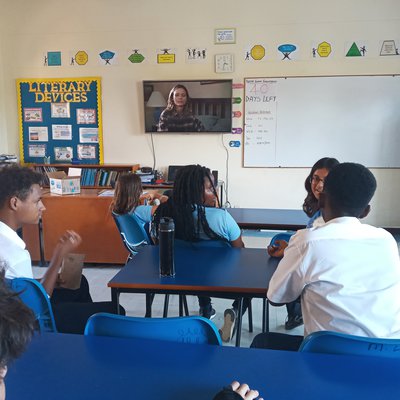
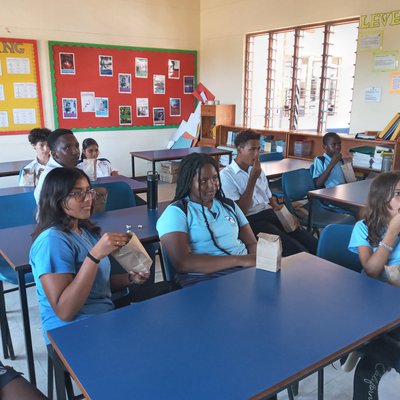
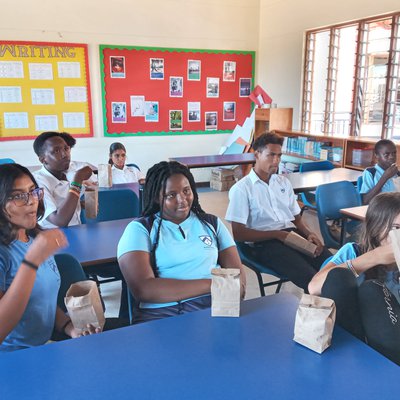
Movie Review By Ana
‘The Deep end of the Ocean’
‘The Deep end of the Ocean’, adapted from the best-selling novel by Jacquelyn Mitchard is about a family who loses their youngest son. In the movie, Beth Cappadora is at her high school reunion when her 3-year-old son, Sammy, disappears from his brother Vincent’s care. The little boy never turns up, and the family must deal with the devastating guilt and grief that goes along with it.
Nine years later, the family has relocated to Chicago and by a sheer fluke, the boy turns up, living no more than two blocks away. The authorities swoop down and return him to his biological parents, but things are far from being that simple. The boy grew up around what he has called his father, while his new family are strangers to him; the older son Vincent, now a teenager, has brushes with the law and behavioural problems. His adjustment to his lost brother is complicated by normal teenage issues and meanwhile, their dad seems to expect everything to fall into place as though the family had been intact all along.
As events unfold throughout this movie, viewers are taken through tense moments when many questions race through their minds:
Will they be able to successfully find the child or will they have to move on from the little boy?
How do the other children grow up with the little boy's absence in their childhood?
How do the parents move on from this loss? Do they ever move on?
I must say the climax of the movie progressed a little unexpectedly, but it all worked out in the end. The beginning was also easy to understand as the plot was not too complex. The movie had a very nice introduction that progressed through each scene well. All the scenes were acted well and the chemistry between the actors was so real. As the story developed it was easy to empathise with a lot of the characters. In short, the movie was very well thought out and produced. I would give it a 4-star rating and recommend it to anyone who wants to relax and watch a feel-good movie.
The movie had a heartwarming ending and I would recommend it as a movie to watch with the family anytime. Everything about the Cappadora family was relatable and easy to understand. The movie answers many questions, especially the feelings of the siblings and parents when faced with such dilemmas and the actors did a great job portraying the emotions of the characters well.
It was very well directed and produced with a great choice of actors who fitted the characters they played wonderfully. The plot was well thought out and executed and, in the end, most of the questions we had asked were answered during the exciting movie sessions. These were followed by vibrant discussions and debates that provided an opportunity for students to be part of something fun, creative, and sociable, the Film club.
BY ANA
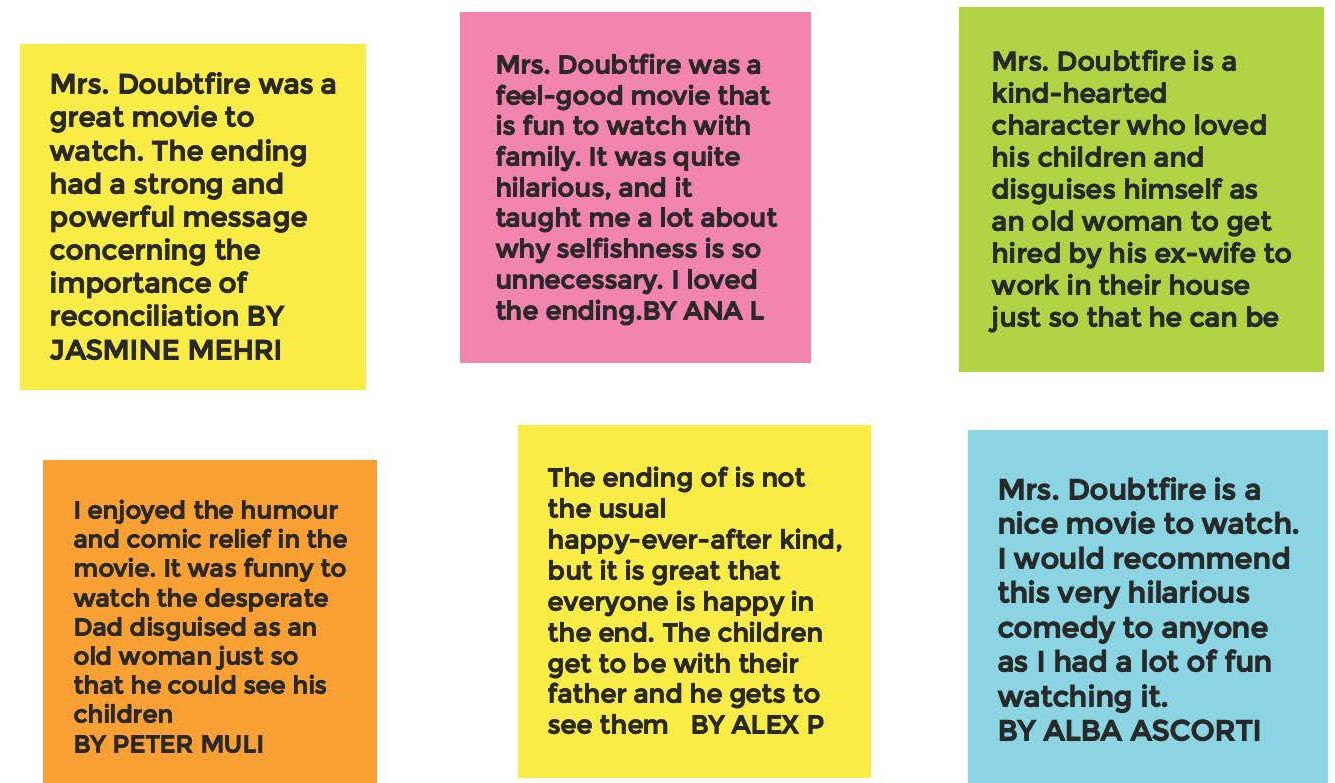
Spiritual and Moral development in KS4 Maths Learning Support Club
Mathematics support for students is an innovation in the teaching and learning of mathematics that now plays a vital role in their learning experience and is a very valued club here at BMIS.
Our students have valued one-to-one interaction most highly. The learning support teacher has spent time with the student, seeking to understand the issue they are finding difficult and then providing input to, hopefully, move the student forward. Students have also been referred to learning resources or set them some exercises to test their understanding before moving on to another topic.
Our conversations during the club have highlighted that every one of us does maths in some form every day, whether it’s setting a timer while cooking, working out what time to leave to get to school, or mentally calculating how many days are left until holidays. Often, what it boils down to is that we can use maths in context without a problem, but we sometimes find the abstract nature of the subject – such as vectors or factorising – difficult.
It was important that all Year 11 students attended every week to not only revise topics previously covered but to also consolidate their understanding of the topics being taught in lessons. Students should now be learning the maths formulae, continue practising past papers and using online resources such as myiMaths regularly in preparation for their final IGCSE examinations. This will certainly help their confidence to increase further.
Students have enjoyed exploring mathematics in the various ways below during the Learning Support Maths club:
Spiritual development in Mathematics
The study of mathematics enables students to make sense of the world around them and we strive to enable each of our pupils to explore the connections between their mathematics skills and every-day life. Developing deep thinking and an ability to question the way in which the world works promotes the spiritual growth of pupils. Pupils are encouraged to see the sequences, patterns, symmetry and scale both in the man-made and the natural world and to use maths as a tool to explore it more fully.
Moral development in Mathematics
The moral development of pupils is an important thread running through our mathematics curriculum. Pupils are provided with opportunities to use their maths skills in real life contexts, applying and exploring the skills required in solving various problems. For example, pupils are encouraged to analyse data and problem solve and reason why this data may be true or false. The logical aspect of this relates strongly to the right/wrong responses in maths.
Problem solving in Mathematics
Problem solving skills and teamwork are fundamental to mathematics through creative thinking, discussion, explaining and presenting ideas. Pupils are always encouraged to explain concepts to each other. During this discussion time, pupils realise their own strengths and feel a sense of achievement which often boosts confidence. Over time they become more independent and resilient learners.
Culture in Mathematics
Mathematics is a universal language with a myriad of cultural inputs throughout the ages. Various approaches to mathematics from around the world are used and this provides an opportunity to discuss their origins. This includes different multiplication methods from Egypt, Russia and China, Pythagoras’ Theorem from Greece, algebra from the Middle East and debates as to where Trigonometry was first used. We try to develop an awareness of both the history of maths alongside the realisation that many topics we still learn today have travelled across the world and are used internationally.
It has been very rewarding working with the students in Learning Support Mathematics and seeing the progress they have made since Term 1. I wish them every success in their final IGCSE examinations.
Nabiha Janoowalla








